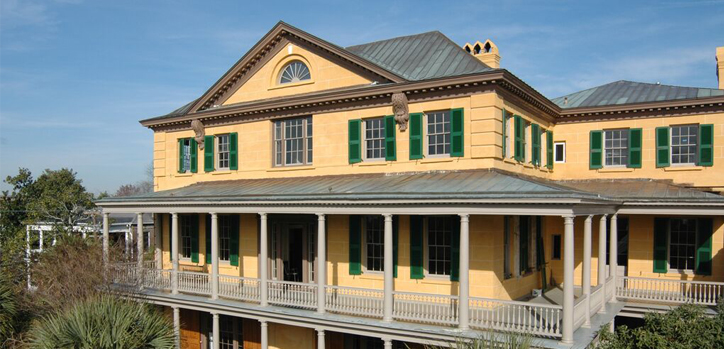Telling the SAT Story: Aiken-Rhett House: Inspiration for Investment
Aiken-Rhett House
Charleston, SC
Year of Award: 2004
National Park Service SAT Grant: $225,000
Matching Share Leveraged: $474,230
“When a work lifts your spirits and inspires bold and noble thoughts in you, do not look for any other standard to judge by: the work is good, the product of a master craftsman.” – Jean de la Bruyère
The Aiken-Rhett House Museum is a Charleston icon, contributing greatly to the aesthetic charms and sense of place that the city’s downtown is known for. However, just over ten years ago, the exterior of the house was in dire need of repair. Water had infiltrated between the masonry construction and its stucco cladding which resulted in twofold harm to the building: 1) The stucco cladding could completely lose its bond and begin to delaminate, or lose its bond from the masonry. 2) Moisture trapped between the stucco and brick had begun to leach inward through the brick, causing damage to the original plaster walls and 19th century wallpaper.
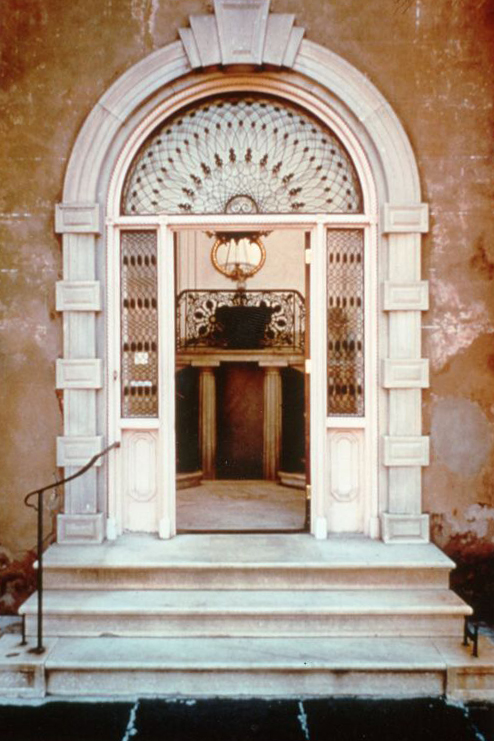
The main entrance to the Aiken-Rhett House, before restoration, with damaged stucco visible to the right.
The National Park Service awarded a Save America’s Treasures grant to the Historic Charleston Foundation owner of the Aiken-Rhett House Museum House—allowing them to successfully repair and rehabilitate the exterior of the building. Receiving funding from a national program at the level of Save America’s Treasures indicated how important the project was to other potential donors, which helped HCF raise the necessary matching funds.
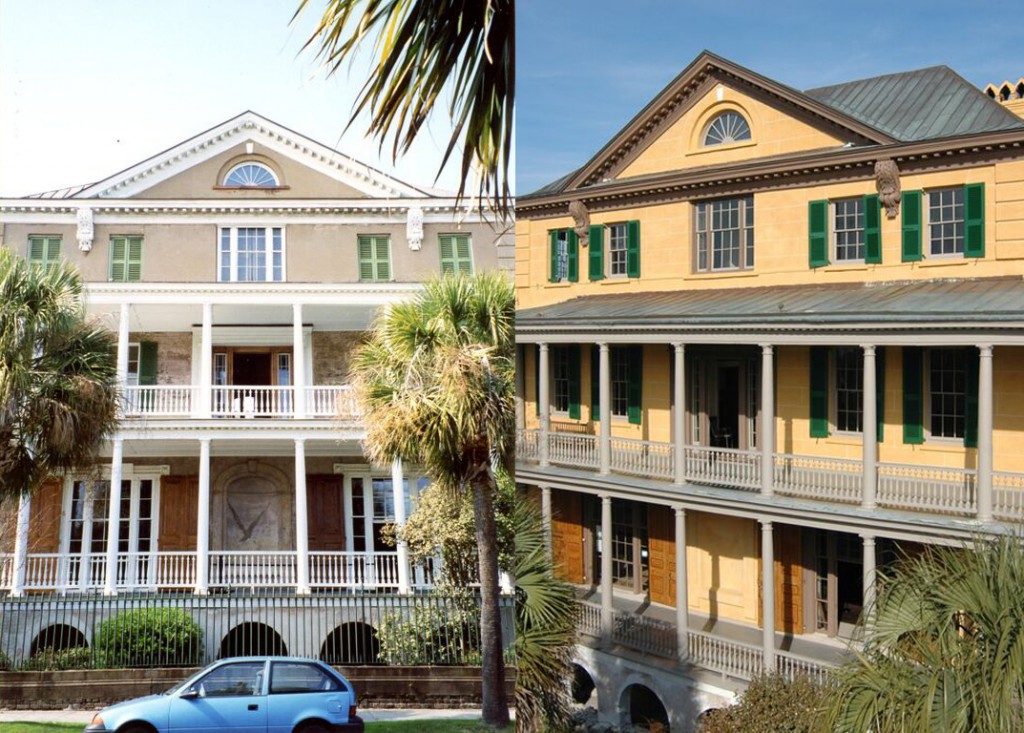
The exterior façade of the Aiken-Rhett House, before (left) and after restoration.
Once secured, these funds were invested back into the community by hiring skilled local artisans and craftspeople to undertake the complicated architectural conservation and rehabilitation methods necessary. The first step in this work was to stabilize the exterior envelope of the building, preserving and repairing the historic stucco in order to protect the rest of the building. In this process, workers first sounded the stucco for areas of delamination, identifiable by a more hollow sound due to the gap between the stucco and the surface beneath. In areas of delamination, the stucco was removed, and tested for composition. Through this process, skilled craftspeople can determine the correct ratio of lime to aggregate (typically sand) so that the historic mortar can be matched by a fully compatible repair mortar with similar properties.
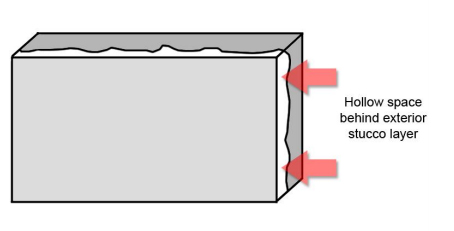
Diagram of stucco delamination, based on an illustration by Cathedral Stone Products, Inc.
Craftspeople pencil scored the stucco to match its historic faux-Bath stone appearance and applied a traditional 19th century limewash to the exterior of the stabilized stucco. Lastly, they gave the stucco a protective coating and tinted it back to its original yellow color. Additionally, talented local artisans restored window sashes and painted decorative finishes on shutters and other surfaces. The grant project was also a learning opportunity, teaching valuable skills to local craftspeople such as a historical technique known as sandpainting, in which bellows blow sand onto the painted surfaces of the wooden exterior door architraves to give them the appearance of brownstone.

A skilled artisan adding a faux wood grain finish to some of the full-length exterior shutters.
This project helped the Historic Charleston Foundation learn important lessons regarding the costs of large rehabilitation and restoration projects, said Valerie Perry, Aiken-Rhett House Manager. This new knowledge allowed the Foundation to adjust its maintenance budgets accordingly. In addition, Ms. Perry noted that the successful completion of the project enhanced the Foundation’s reputation as “good stewards of one of Charleston’s most significant properties.”
In addition to the direct community reinvestment that resulted from this project, it spurred additional community investment by example. Two neighboring properties undertook rehabilitation projects within a few years of the completed SAT project, citing the Aiken-Rhett house project as the inspiration for their investment in their properties.
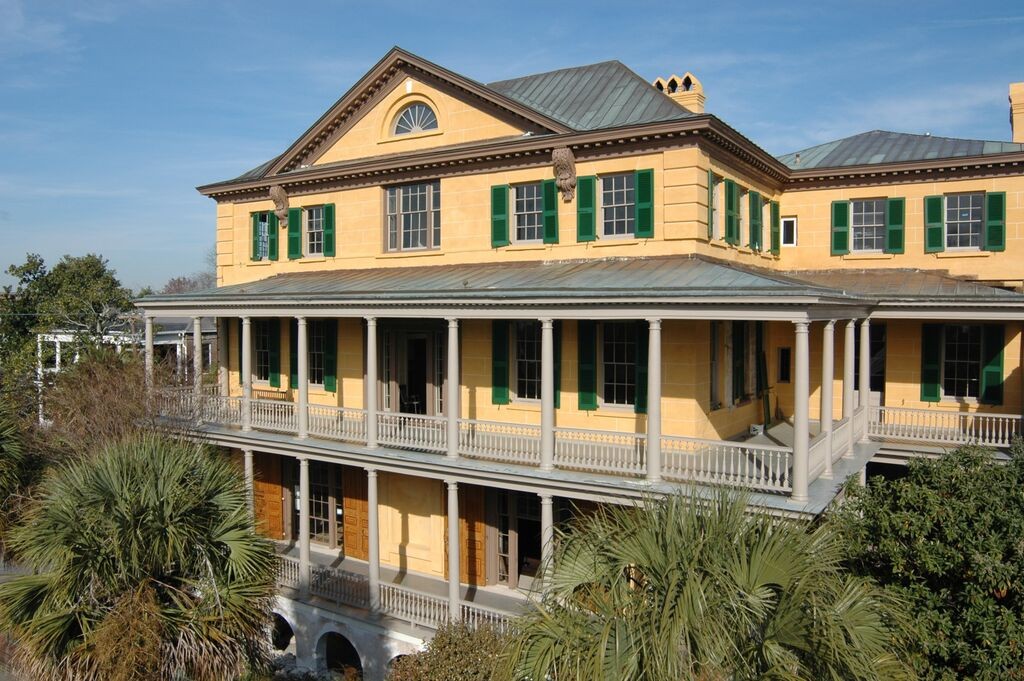
A full view of the restored exterior of the Aiken-Rhett House.
Thanks to the funding provided by the Save America’s Treasures project from the National Park Service, the Aiken-Rhett House continues to be a vibrant part of the community in historic Charleston, South Carolina.
For more information on the Aiken-Rhett House Museum and the Historic Charleston Foundation, please visit their website, or connect with them on Facebook or Twitter.
Established in 1999, the Save America’s Treasures program is managed by the National Park Service, with the National Endowment Agencies, to preserve and protect nationally significant properties and collections for future generations of Americans. Stories of saving those treasures will be shared through partnership with the American Architectural Foundation.
Photos courtesy of the Historic Charleston Foundation.

